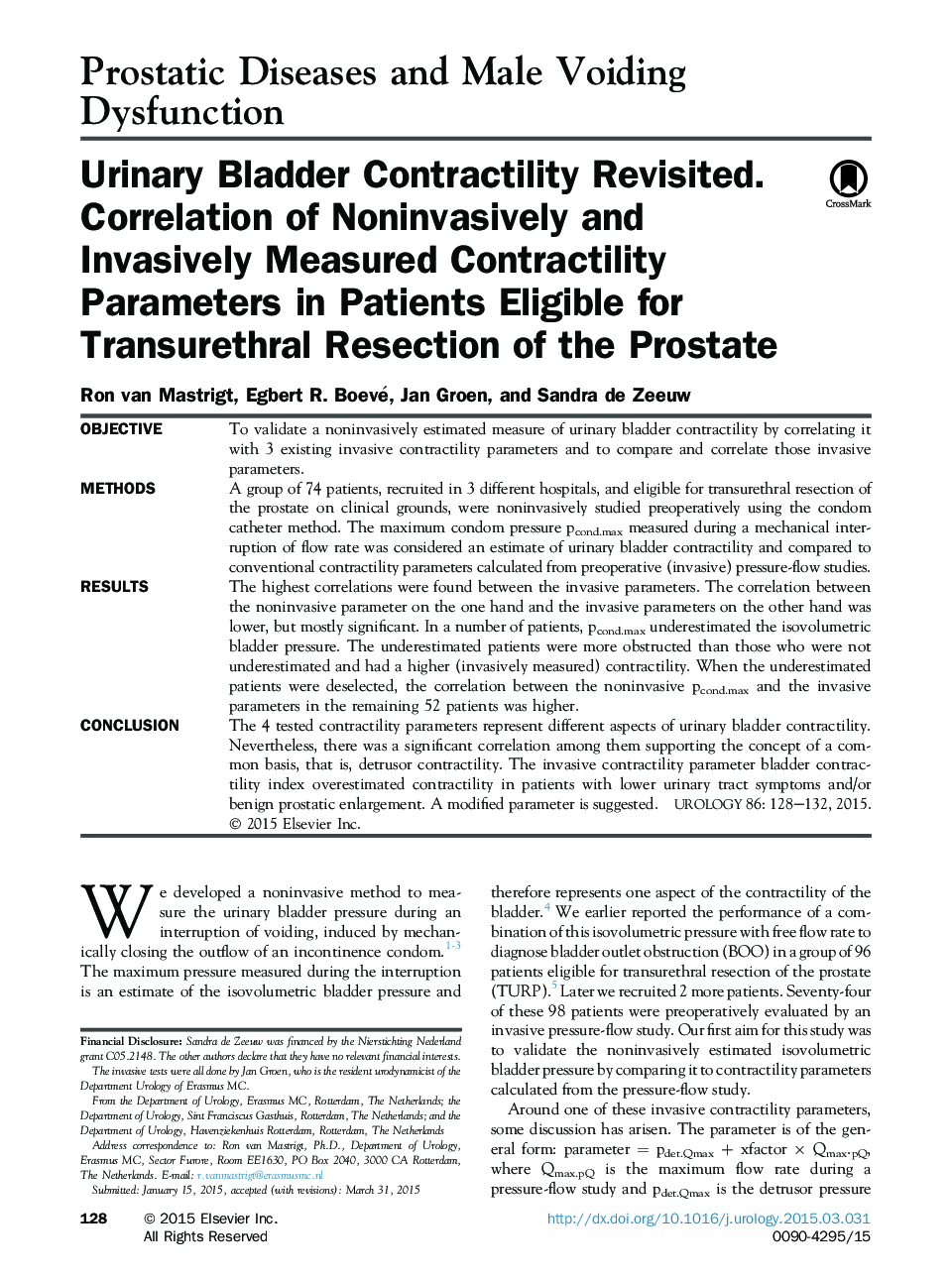| Article ID | Journal | Published Year | Pages | File Type |
|---|---|---|---|---|
| 3898509 | Urology | 2015 | 5 Pages |
ObjectiveTo validate a noninvasively estimated measure of urinary bladder contractility by correlating it with 3 existing invasive contractility parameters and to compare and correlate those invasive parameters.MethodsA group of 74 patients, recruited in 3 different hospitals, and eligible for transurethral resection of the prostate on clinical grounds, were noninvasively studied preoperatively using the condom catheter method. The maximum condom pressure pcond.max measured during a mechanical interruption of flow rate was considered an estimate of urinary bladder contractility and compared to conventional contractility parameters calculated from preoperative (invasive) pressure-flow studies.ResultsThe highest correlations were found between the invasive parameters. The correlation between the noninvasive parameter on the one hand and the invasive parameters on the other hand was lower, but mostly significant. In a number of patients, pcond.max underestimated the isovolumetric bladder pressure. The underestimated patients were more obstructed than those who were not underestimated and had a higher (invasively measured) contractility. When the underestimated patients were deselected, the correlation between the noninvasive pcond.max and the invasive parameters in the remaining 52 patients was higher.ConclusionThe 4 tested contractility parameters represent different aspects of urinary bladder contractility. Nevertheless, there was a significant correlation among them supporting the concept of a common basis, that is, detrusor contractility. The invasive contractility parameter bladder contractility index overestimated contractility in patients with lower urinary tract symptoms and/or benign prostatic enlargement. A modified parameter is suggested.
